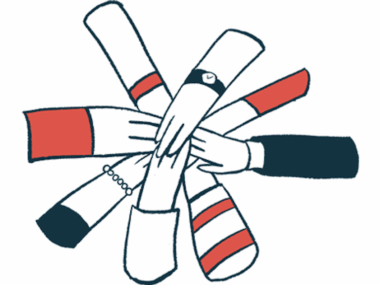Patients often responsible for communication between their MDs
German study calls for healthcare coordinators to help patients, families
Written by |

People living with rare diseases frequently end up being responsible for communication between their healthcare providers, a new study from Germany highlights.
The finding “supports the need for establishing structures to unburden patients and caregivers from long distance travelling and being responsible for organizing their own healthcare,” researchers wrote in the study “Patient experiences of interprofessional collaboration and intersectoral communication in rare disease healthcare in Germany – a mixed-methods study,” which was published in the Orphanet Journal of Rare Diseases.
Getting medical care for rare diseases such as AADC deficiency is often complex and burdensome as rare diseases can take months or years to correctly diagnose. Even once the disease is correctly identified, many patients require support from many different types of healthcare providers to maintain their best health. For example, in Germany, there are just a handful of centers that provide specialty care for most rare disease patients in the country, so many patients receive care from local physicians in between visits to the specialty center.
Patient’s healthcare providers don’t often communicate with each other
Ideally, healthcare providers who are caring for the same patient would communicate with each other to ensure they’re each working to give the best care possible, but this coordination often doesn’t happen.
In this study, a team of scientists in Germany wanted to better understand the experiences of rare disease patients and caregivers in navigating communication among providers.
The scientists conducted a survey of 299 people, 176 patients living with a rare disorder and 123 caregivers of children with rare disorders. The most common diagnoses in the group were Marfan syndrome, a genetic disorder that affects connective tissue, and Esophageal Atresia, which is characterized by abnormal development of the digestive tract. However, more common than either of these patients were those who were still in the process of searching for a correct diagnosis. About a third of the respondents reported living more than 100 km (62 miles) from a specialty center.
To supplement the survey, the researchers also conducted interviews with 50 rare disease patients to ask about their experiences.
Results from the survey and interviews showed that, overall, most patients said they were generally satisfied with the healthcare they received. However, more than 1 in 3 survey respondents said that doctors at their rare disease center didn’t communicate at all with their local providers — and even when there was some communication, it was often slow and done only via writing or paperwork.
I have all my medical reports and diagnostic findings, I have a whole file of them. I have all of this here and I coordinate who gets the reports and I forward them proactively.
As a result, patients and their caregivers often ended up having to act as the middleman to ensure effective communication between providers.
“I have to coordinate this all by myself,” one patient said in an interview. “I have all my medical reports and diagnostic findings, I have a whole file of them. I have all of this here and I coordinate who gets the reports and I forward them proactively.”
“Either I take charge of it or nothing happens,” the patient added.
In interviews, many patients noted that seeing the same providers over time — rather than seeing a different doctor at every visit — can reduce the chance for miscommunication and help patients feel more confident that their providers are on top of things.
“That one physician still treating me, I am very sure she knows the direction we should head to,” one patient said, adding, “I am scared of the day she might leave. I just feel safe with her.”
Need for better structures to facilitate communication among providers
Overall, these findings highlight a need for better structures to facilitate communication among providers, as well as support for patients navigating the system. One potential strategy that could help, the researchers said, is the introduction of “patient guides” — healthcare workers whose job it is to help families coordinate healthcare needs, reducing the burden on the families themselves.
“The patient guides work as case managers and significantly improve the situation for people with the disease. They act as contact persons, mediators and coordinators within the respective facility, organize interdisciplinary consultations, guide the patient to the appropriate services and take over interface communication with the outpatient sector,” the researchers wrote, noting that pilot programs for this type of rare disease support are already in progress in Germany.







